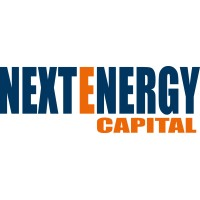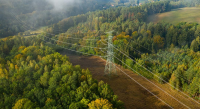
Energy Transition Reset
An update to our investment thesis given political and market developments over the last two years.

In a time of flux for the energy transition, we think it is important to take the opportunity of having our community gathered together to take some time to restate our mission and how we are thinking about our industry and investment opportunity in the “current environment”. More specifically, we refer to the backpeddling on climate commitments from governments and corporations and the obvious hostility from the Trump administration towards climate science and a decarbonisation agenda. The shift in the political environment has seen many in our industry reposition away from “climatetech” and towards “resilience” or “abundance” or “energy transition”. At Keeling, our investment thesis remains the same, however, we have moved towards describing ourselves more as “energy transition” investors. In part, this is to create some distance from some of the excesses and capital misallocation that attended the “climatetech” hype period and partly to be clear on the fundamental challenge that has always motivated our investment thesis. That fundamental challenge is this:
How do we supply the energy humanity needs without destabilising our planetary systems?
This core challenge has two parts - humanity’s needs, and stable planetary systems: One observation of the climate action community we have is that a singular focus on the latter has left it vulnerable to challenges that it doesn’t care about the former, and demands for impractically steep reductions in emissions left it vulnerable to political backlash.
The world currently uses about 70,000 TWh of useful energy, that is to say energy services. This is what we really care about from a quality of life perspective - lighting, heating, cooling, transport, compute, etc. Humanity’s demand for energy services will roughly double over the next 25 years. And, to be clear, we absolutely want more useful energy delivered to our society. We clearly want more useful energy for vast swathes of the world’s population that still live in poverty, but we would also argue that we want more of it in the rich world that we are so privileged to be a part of. As the surge in AI-driven power demand shows, we are only limited by our imaginations as to what productive ends we can use energy. So humanity’s energy needs aren’t strictly capped, but 70,000 TWh is what we need just to be at our current level.
As for the supply, we currently attain the 70,000TWh of useful energy with about 200,000TWh of primary energy, being the embodied chemical energy of the mostly fossil fuels we put into the energy system (plus the grossed-up equivalents for low-carbon generation). We need to fundamentally transform the make-up of our primary energy inputs to low carbon to reduce the extent of climate change as much as possible.
Figure 1: Global Primary Energy Consumption by Source
Two things are clear from Figure 1 above. Firstly, most of the energy system is currently fossil fuels. Secondly, fossil fuel demand is yet to peak. The realised path of emissions over the last few years, and its stark divergence from various net zero ambitions, is a strong contributor to the reset of the climate and decarbonisation story. The wave of net zero commitments that came early in this decade (coinciding with the late innings of the zero interest rate policy - ZIRP - era) were clearly divorced from any durable political reality. There did seem to be a moment of building political consensus around climate action, but it proved ephemeral. Unfortunately for many wading into the energy transition space at that time, there was a wave of investments that were predicated on strong demand pull either from shifting policies or from corporates’ desire to meet public climate commitments (e.g. hydrogen, carbon markets, etc). The political realignment has resulted in an economic reckoning for certain parts of the climate tech market and dashed hopes for dramatic near-term emission reductions. The vibes have markedly deteriorated.
However, whilst we would of course prefer to see more political support for aggressive-yet-pragmatic climate action, we want to engage with the world as it is and not as we would wish it to be. We also welcome a return of more disciplined capital allocation in our area and a focus on clear value propositions for end customers and commercial pull. Luckily, despite the vibe shift, we are still making remarkable strides in scaling low-carbon energy and the world is teeming with opportunity. This is the case even if we are just addressing the relatively-speaking low-hanging fruit of the energy transition. To make the point explicitly, both things can be true; we can be behind globally on emission reductions and we can have a massive and growing opportunity in scaling low-carbon technologies.
A couple of years ago, we put out a primer to the energy transition, Energy Transition: Distilled. We broke the path to net zero into four distinct “decarbonisation vectors”, namely:
- Efficiency & Electrification
- Scale low-carbon electricity
- Green molecules
- Carbon management
Already the majority of our investment focus has been on the first two vectors. They make up 75% of our underlying portfolio exposure to date in Fund I, and we expect that to tick up over time. The shift in the political landscape will see us double down even more on those first two in Fund II, with relatively smaller exposure to the latter via the rare managers who can do it well.
The trends in scaling solar, batteries and, to a lesser extent, wind, are now self-reinforcing and secular. Scale begets scale, and large end markets results in more value accruing to even incremental gains in the incumbent technologies and where consistent improvements grow the commercial applications and the end markets. These charts are familiar to many of you, but just to hammer home the point.
Solar is the fastest growing source of power in history, on a consistent long term exponential trend (potentially >2,000 TWh in 2025):
Figure 2: Annual Generation after exceeding 100 terawatt-hours in a year
Batteries are earlier in their adoption cycle, but are following a similar path. BNEF expects battery storage deployment to be in the region of 95GW, up 35% from 2024.
Figure 3: LHS - Average Battery Pack cost ($/kWh). RHS - Battery Storage Capacity Additions (GW)
The improvements in batteries have enabled rapid growth of electric vehicles. Again, this feeds back into improvements in batteries and opens new frontiers for electrification - first cars, then trucks, then trains, etc.
Figure 4: Global EV Sales (2014 – 2024)
And as these technologies have taken off, they have begun to gobble up more of the opportunity space, for instance with batteries enabling the electrification of things that were previously contemplated as opportunities for hydrogen. Even as investment in the energy transition has grown from less than $1trn in 2020 to more than $2trn in 2024, there hasn’t been takeoff in those nascent sectors that roughly correspond to our third and fourth decarbonisation vectors.
Figure 5: LHS — Energy Transition Investments in Mature Sectors. RHS — Energy Transition Investments in Emerging Sectors
We are returns-first investors and have always sought the most commercial opportunities with real customer value in the energy transition. As things have shifted, the already-narrow path for some technologies has narrowed further, while the incumbent platform technologies have cemented their dominance. Going forward, we are working to truly identify durable technology trends that can serve as tailwinds to create outsized financial returns.
Based on our observations over the last couple of years, here are some things we believe and which inform our investment focus for the next period:
- Solar and batteries will continue to improve and scale at an exponential rate, opening new opportunities for deployment.
- Demand for electricity in the US, particularly amongst data centre developers, will pull forward emerging technologies in low-carbon generation and energy management.
- The growth of intermittent generation as well as variable load from new large power users increases the complexity of the grid and will require significant new investment including software.
- Artificial intelligence will open up new frontiers for efficiency and system optimisation.
- The volatility of the climate will increase, at the same time that we continue to build more infrastructure and real estate that is put at risk. Adaptation and resilience will become more important over time.
The above is non-exhaustive when it comes to the solutions that we’ll need to fully decarbonise, but already it gives us a huge opportunity set and plenty to be getting on with to advance the energy transition. Despite the shifting sentiment around broad climate action, we are incredibly excited about the opportunity in venture as the energy transition evolves to its next phase.
LikeDiscussion
Share
Discussion
You are commenting on Energy Transition Reset
You must be logged in to add a comment
There are no comments
Be the first to add to the discussion
Fund manager

Keeling Capital
Dublin, IrelandKeeling Capital is a dedicated energy transition and decarbonisation venture and growth platform. We offer allocators access to top-tier venture capital opportunities through a dual strategy: a curated portfolio of top-tier specialist managers, and a proactive, thesis-driven co-investment program targeting high-conviction breakout companies. Our LPs benefit from curated access to oversubscribed managers, vetted co-investments, cutting-edge insights, and a high-quality peer network.
private equityfund of funds
Related news


The best response to “Drill Baby Drill”? “Electrify Baby Electrify”

NextEnergy Group Launches its New Sustainability Strategy

Low Carbon and SmartestEnergy Partner to Accelerate UK's Transition to Net Zero

Gridlock: Why Investment in Transmission Is Critical to Reach Net Zero

Quinbrook to invest up to £100m in Aegis Energy to lead the deployment of clean, multi-energy refuelling hubs for commercial vehicles in the UK

NextEnergy Group maintains carbon neutrality since 2022

Goldman Sachs Alternatives Launches Climate Credit Strategy with $1bn in Initial Commitments

Goldman Sachs Alternatives Launches Climate Credit Strategy with $1bn in Initial Commitments
